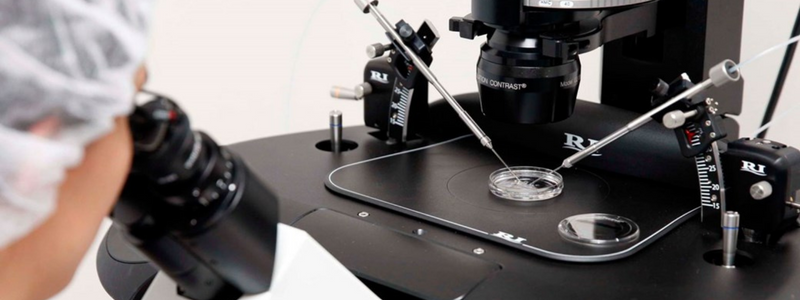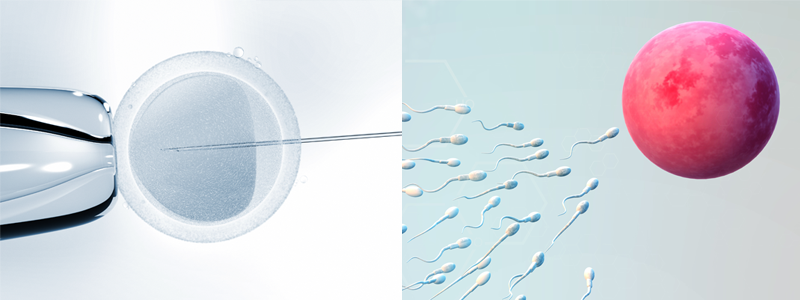How do you assess what a good embryo is?
The quality of an embryo and how ‘good’ it is, is assessed by morphology evaluation. Traditionally, this would involve checking the embryo under a microscope each day to assess the general appearance of the embryo, such as the number of cells and to check the progression of the development during culture. Although effective, this means the embryos are removed from the incubator for a short-period each day. In recent years, advancements have been made in technology to allow us to monitor embryo development without removing them from the incubator.
This more advanced method of assessing embryos is known as time-lapse imaging. This involves taking pictures of the embryos at regular intervals, which generates footage of their development over time without disturbing them.
How are embryos graded?
Embryos are graded to determine which are growing normally and can produce a successful pregnancy. Those embryo(s) with the best available grade are then chosen to be implanted.
In the first 3 days of culture, the criteria used to select the best quality embryos usually includes the number of cells present, how fast the cells are dividing, whether the cell division is even and whether there are any fragments of cells present. Embryologists particularly look at the growth rate of the embryos, which may signify chromosomal abnormalities if the growth rate is not regular. At the blastocyst stage (day 5-6), the embryo expands like a balloon and differentiates into 2 cell types and the quality is reported using a number and two letter grades for the two different parts of the embryo. The numbers (1-6) tell us how far the embryo has expanded and the letters tell us the quality of the 2 cell types: inner cell mass and the trophectoderm. If the blastocyst implants, the inner cell mass will develop the foetus while the trophectoderm will develop into the placenta. For each, the embryologist will give a grade from A (excellent) to D (very poor).
What is the impact of freezing embryos?
If in line with patients’ wishes, embryos which are not transferred can be frozen for future implantations. The freezing process can cause some concern among patients on whether the process will affect quality. However, in short, there is no evidence to suggest that freezing impacts quality. In fact, developments in the process of freezing means that survival rates for frozen eggs and embryos now exceeds 90%.
Does the timing of the embryo transfer impact IVF success?
If sufficient numbers of embryos are available, it can be useful to extend culture to the blastocyst stage. This allows the embryologist to choose the best quality embryos for transfer.
Day 3 embryos also have excellent chances for implantation, and embryo transfer on day 3 gives equivalent success rates to that of day 5. Generally speaking, in order to optimise success rates, we prolong embryo culture where possible. However, in the absence of the ability to select embryos in the lab (such as when there are few embryos in culture), there is no advantage to this process therefore embryos are transferred on day 3 where they can progress under the care of the mother.
In general, we aim to give you the greatest chance possible of getting pregnant, and so decisions will always be based on information we have gathered to assess your embryos. We are also constantly evolving and fine-tuning our methods based on new research.
Terminology
PGT-A (Pre-implantation genetic testing for aneuploidy)
PGT-A is a type of genetic testing, in which a few of the cells of the embryo are removed and the chromosomal content is analysed to determine its genetic pattern. This means we look at the chromosomes to see if the embryo has the correct number.
For the best chance of success, we want to create an embryo made up of an equal number of chromosomes from the egg and sperm making 23 pairs of chromosomes. Having an irregular number of chromosomes (aneuploidy) is one of the leading causes of miscarriage and therefor having a PGT-A test may be helpful in preventing these from happening.
The PGT-A test is usually done in the blastocyst stage (day 5 or 6 of development) and we take a few cells to test, at this stage the embryo has over 100 cells, so we make sure to only take a few. We send the cell sample to our specialist testing lab where they count the number of chromosomes and repost back on which have a normal number of chromosomes and which are aneuploid.
This procedure is not suitable for everyone, however. Generally, this testing is advised for women over the age of 37, as aneuploidy can be more common in older women. This procedure may also be advised in the case of multiple failed implantations and some women may prefer to have the test if they are only having one embryo implanted, so that they know about the risk of miscarriage – others may not.
Mosaic embryos
On occasion, the genetics lab will reveal that an embryo is mosaic. This means that there are some cells with a different genetic pattern to others within the same embryo. Some cells are euploid (contain a normal number of chromosomes) and some aneuploid (contain an abnormal number of chromosomes). It is still not certain what causes mosaicism, and embryos of this kind are given a classification of ‘high’ or ‘low’ levels. Research suggests that those embryos with a lower level of mosaicism have a reasonable chance of a healthy birth, while high level embryos typically have a lower chance.
It is important to remember that every case of mosaicism is different and if it appears that one or more of your embryos are mosaic, treatment can be tailored to meet individual needs.
How to improve egg and sperm quality
The core thing that will impact an embryos quality is the quality of the egg and sperm. A woman is born with a finite number of eggs that will decrease over time. Men, unlike women, continue to make sperm throughout their life. Although age has more of an impact on eggs than sperm, both are impacted by age, so it’s important to live a healthy lifestyle to ensure your eggs and sperm are the best possible quality they can be. On collection day, we won’t be able to change or improve egg or sperm quality but by using the most advanced fertility technology and techniques we will do all we can to make treatment successful.
If you would like to start your IVF journey with CREATE Fertility, your first step will be to have an Advanced Transvaginal Ultrasound Scan at your local CREATE clinic. Following that you'll have Virtual Consultation with one of our highly experienced IVF consultants which you can do via video or phone, from your own home. You'll then have time with your dedicated patient coordinator who is there to help support & guide you through the whole process.






